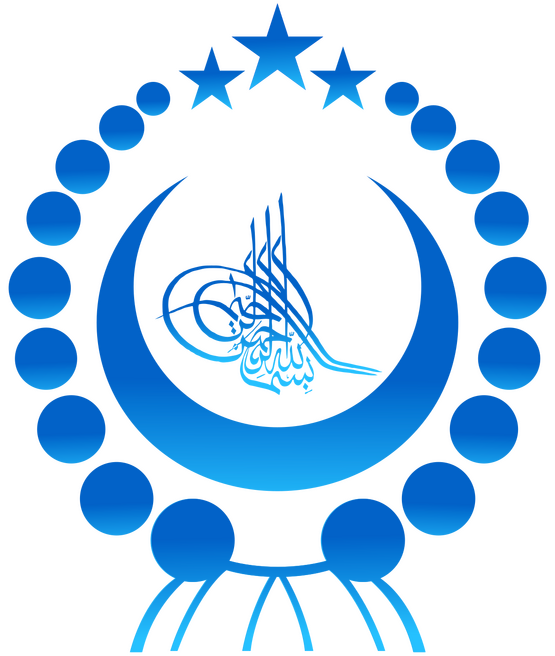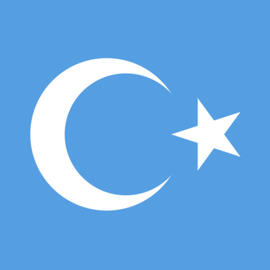
THE UYGHURS 101
CREATED BY DARMAN FOUNDATION
ALL ABOUT UYGHURS
WHO ARE THE UYGHURS
We are Turkic muslims who majoritarily live in the Central Asia area commonly known as East Turkistan. In 1949, the Chinese Communist Party took possession of our homeland and annexed it as the “Xinjiang Uyghur Autonomous Region” (XUAR), “Xinjiang'', meaning “new territory” in Mandarin.
We predominantly speak Uyghur which is part of the Turkic group of language families. We are considered among the oldest Turkic-speaking people of Central Asia.
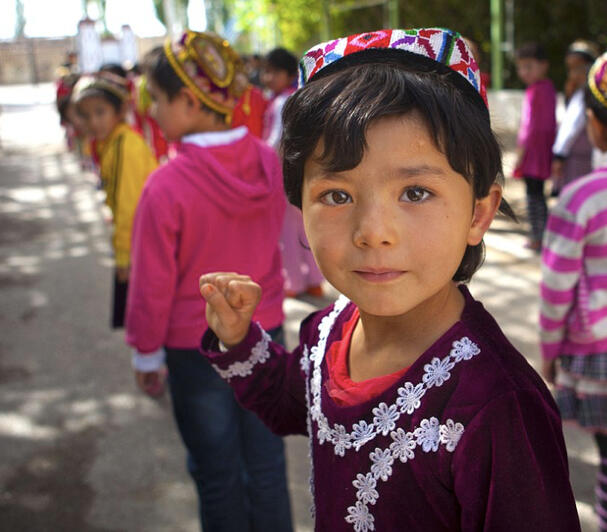
IMPORTANT UYGHUR DYNASTIES THROUGHOUT HISTORY
552 to 744: Kök Türk Khaganate
744 to 840: Uyghur Ali state
870 to 1036: The Ganzhu Uyghur Kingdom
842 to 1212: The Karakhanid Dynasty
856/866 to 1318: The Qocho Uyghur Kingdom
13th to 17th century: The Chaghatay Kingdom
1514 to 1696: The Yarkant Uyghur Khanate
Late 17th to 19th century: The Qumul and Turpan Uyghur Baks
1864 to 1877: The Yakup Bak which lasted until the Qing invasion
November 1933 - February 1934: First Republic of East Turkistan
1944 to 1949: Second Republic of East Turkistan
Click here to watch our summarized video about Uyghur history
EAST TURKISTAN
GEOGRAPHY Of EAST TURKISTAN
East Turkistan, also known as the Xinjiang Uyghur Autonomous Region of China, lies in the heart of Central Asia, beyond a logical boundary of China: the Great Wall. Its current territorial size is 1.82 million square kilometers, which is as large as the Republic of Turkey. There are 14 provinces, 32 big cities, 87 small cities in East Turkistan. Over 30 million Uyghurs, Turkic-speaking people and other Turkic people live there.
Historically, East Turkistan is a part of Central Asia, but it was annexed by China in 1949.
East Turkestan has a diverse geography with grand deserts, impressive mountains, large forests and beautiful lakes. More than 43% of East Turkestan is covered by deserts and another 40% is covered by mountains. East Turkestan borders are China and Mongolia to the east, Russia to the north, Kazakhstan, Kyrgyzstan, Tajikistan, Afghanistan, Pakistan and India to the west and Tibet to the south.
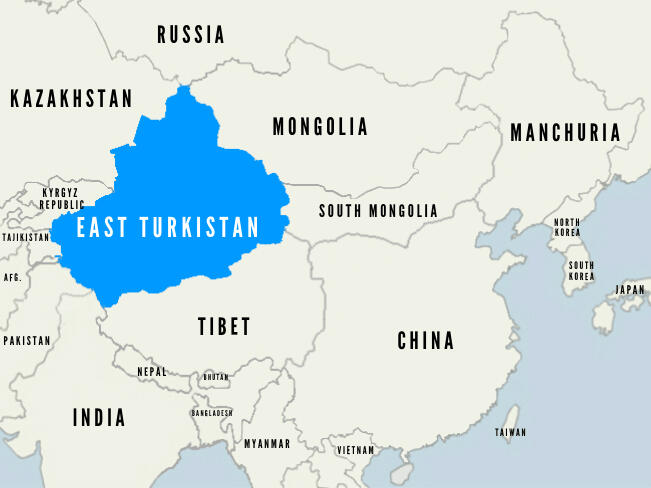
DEMOGRAPHY OF EAST TURKISTAN
As early as 1950, the Chinese Communist Party (CCP) implemented migration policies to encourage the Han Chinese to migrate to East Turkistan in order to have a better control of the land and to slowly dilute the Uyghur identity. According to demographic records, those policies worked. In 1945, Uyghurs made up 82.7% of the population compared to 6% Han Chinese. By 2008, we made 46.1% of the population compared to 39.2% Han Chinese. Now, the CCP is taking extreme measures such as sterilization, internment camps, mass migration for forced labour, residential schools for Uyghur children, etc. (for more information, please visit our Uyghur Genocide tab)
National Emblem of East Turkistan
On November 12, 1933, at the beginning of the First Republic of East Turkistan, the National Emblem, designed by East Turkistan Independence Association, was adopted as the official national emblem by the Parliament and Ministers of the First Republic of East Turkistan.
The crescent symbolizes the revival of East Turkistan and Uyghurs, and the joy and happiness of having established the First Republic of East Turkistan.
The 18 round circles surrounding the crescent refer to the 9 Uyghur Tribes and the 9 Oghuz Tribes of East Turkistan.
The three stars above the crescent represent the three prominent states that were established by Uyghurs in East Turkistan: the Kök Türk Khaganate (552-744), the Uyghur Ali State (744-840), and the Karakhanid Dynasty (840-1212).
To this day, this national emblem continues to be used and accepted by all Uyghur organizations across the world.
National Flag of East Turkistan
At the beginning of the 20th century, Uyghurs sought to restore the independence of the East Turkistan territory and this led to the awakening of an Uyghur led national movement whose goal was to liberate East Turkistan from the Chinese.
Years after the War of National Liberation, the First Republic of East Turkistan was established in November 1933 and ended in April 1934. During that time, the Kök Bayraq (which means Blue Flag in Uyghur), proposed by the East Turkistan Independence Association, was adopted as the national flag after being unanimously accepted by all the ministers of the Republic.
The Kök Bayraq was also the national flag of the Second East Turkistan Republic (November 12, 1944 - December 22, 1949). Since 1949, East Turkistan integrated into the People's Republic of China and the national flag has been banned in China.
To this day, the national flag remains a symbol of East Turkistan’s independence for all of us, Uyghurs.
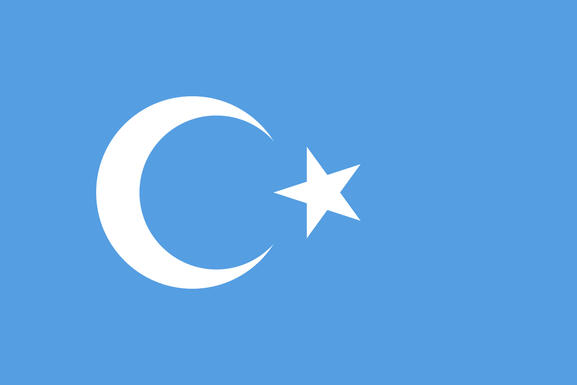
National ANTHEM of East Turkistan
The national anthem of East Turkistan, “Qurtulush Marshi” (On the Path to Salvation), was written by Memet Ali Tewfiq in 1933 and was first sung as the official National Anthem at the start of the First East Turkistan Republic on November 12, 1933.
Click here to listen to the National Anthem of East Turkistan
Uyghur Alphabet
The Uyghur Arab script (i.e., the Official Uyghur Script) is derived from the Arabic script and is primarily used by us, Uyghurs. The first Uyghur Arab script was developed in the 10th century when we embraced Islam. It was called Chaghatay Uyghur script and is also known as Kona Yezik which means “Old Script” in the Uyghur language. This script was used from the 10th to 19th century by us. It was the main script used by writers in the early 1920s. As the alphabet evolved with time, other scripts emerged and now, we use the Official Uyghur Script since 1982. The modern Uyghur Arab script was made official in 1978 and has been reinstituted in 1983 by the Chinese government.
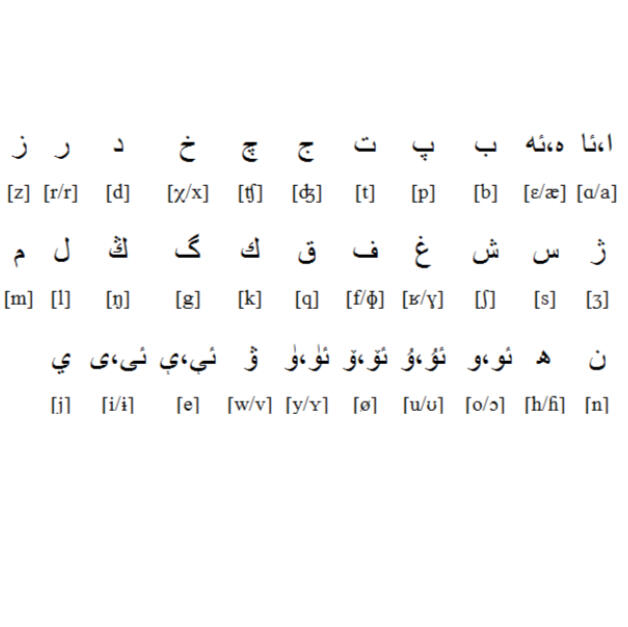
UYGHUR CULTURE
Uyghur Literature
Uyghur literature has a long and rich history and it thrived for centuries. Uyghur scholars wrote thousands of renowned and valuable books in which important knowledge was shared. Two of the most popular and influential books were written by Yusuf Has Hajip whose work is entitled Kutatku Bilig (The Knowledge for Happiness) published on 1069-1070 and by Mahmud Kashgari who wrote a dictionary of Turk languages, titled Divan-i Lughat-it Turk.
Yusuf Has Hajip
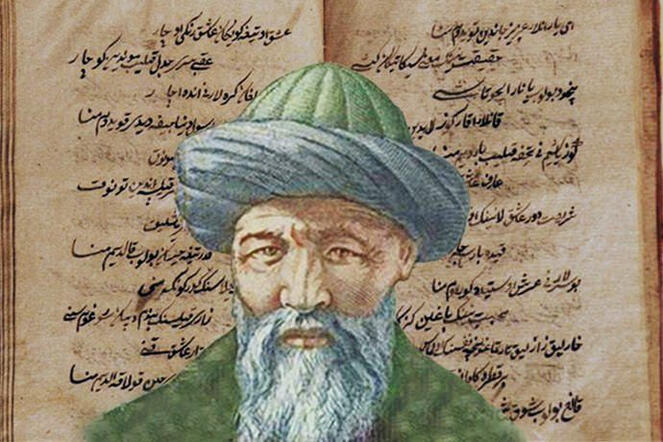
The 12 Muqams
The 12 Uyghur Muqams are our national oral epic and have been designated by UNESCO as part of the Intangible Heritage of Humanity. The 12 Muqams are composed of classic and folk poetry, songs, dances and classical music. It takes approximately 24 hours to finish a round of a 12 Muqam performance.
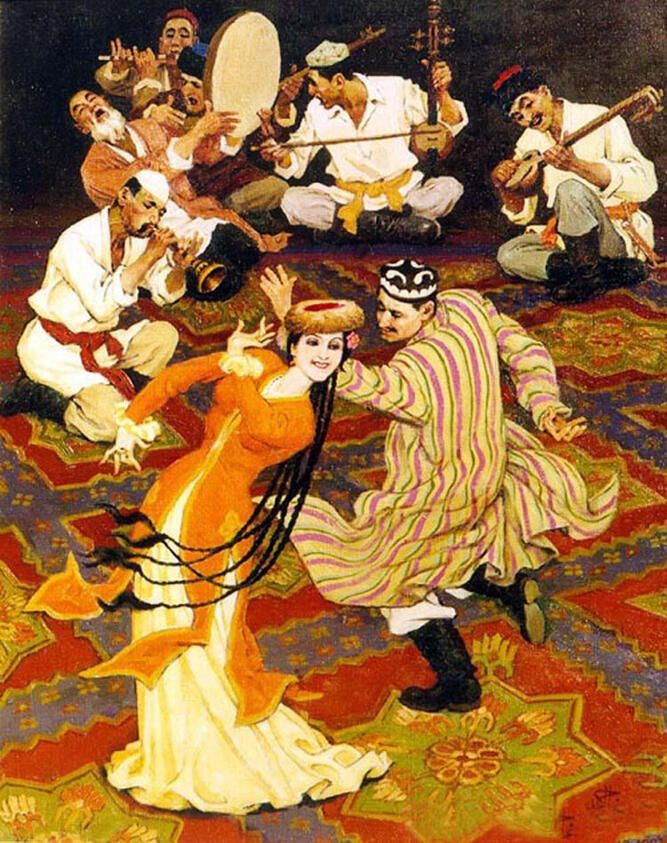
The Uyghur Genocide
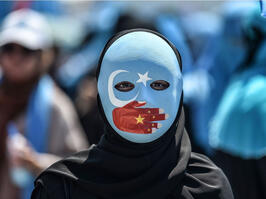
Overview
In 1949, the Chinese Communist Party (CCP) took possession of East Turkistan and annexed the region as "Xinjiang Uyghur Autonomous Region". Xinjiang means "new territory" in Mandarin. Before the Communist regime decided to colonize our land, we, Uyghurs, were a majority in East Turkistan. However, in the mid to late 90s, there was a rapid influx of Han Chinese immigrants in the region because of the Chinese Communist Party’s attempt to slowly eradicate the Uyghur identity (for more information, please visit our Demography tab). Now, there are over 30 million Uyghurs in East Turkistan - one of the largest ethnic minorities in the world.
Since 2017, the CCP uses extreme measures violating human rights to eradicate the Uyghur identity in East Turkistan such as internment camps, Chinese residential schools for children, forced marriage of young Uyghur girls to Han Chinese men, sterilization of Uyghur women, mass migration of Uyghur to forced labour camps for from East Turkistan and prison.
The CCP is proactively hiding the oppression and the atrocities Uyghurs are facing from the world. At first, they were denying the existence of concentration camps and all the atrocities Uyghurs in East Turkistan are facing, but now that documented evidence is out there and they could not deny it anymore. They took a different approach and started admitting that internment camps exist, but painted them as “re-education centers” for criminals and potential terrorists.
Don’t be influenced by Chinese propaganda! What is happening right now to Uyghurs in East Turkistan is an active genocide.
WHY ARE UYGHURS TARGETED by China
The Chinese Communist Party (CCP) wants total control of East Turkistan and to do so, it has implemented policies to eradicate us, Uyghurs, from the world. The primary reason China wants total control of our motherland is that China is economically dependent on East Turkistan. Indeed, numerous critical resources primarily come from East Turkistan. It is rich in energy resources, as it accounts for nearly 40% of China’s coal reserves, 20% of China’s oil and gas and 20% of China’s potential wind energy. East Turkistan has also a strategic geographical location and it is the biggest “province” in China. By 2013, East Turkistan has become even more important to China since it launched the “Belt and Road” initiative, a trillion-dollar investment. It is meant to boost China’s economy and political influence all around the world. East Turkistan is the most important corridor for this whole project.
The Numerous Resources of East Turkistan
East Turkistan’s (i.e., Xinjiang) contribution to China’s economy is undeniable and China has come to be economically dependent on its resources to prosper economically. The country has invested heavily into industry and energy projects in the region.
East Turkistan has a third of the national oil and gas reserves which are the largest natural gas reserve nationwide. The East Turkistan region holds 40% of China’s coal reserves which are the largest in the country. It also gives 60% of China’s output in coton and its lands are full of rich minerals.
Location of East Turkistan in the map
East Turkistan sits between China and Central Asia which is a window opening to the West for the Chinese economy.
The Size of East Turkistan
East Turkistan’s territorial size is 1.82 million square kilometers and it is a sixth of China’s territory! However, less than 1% of China’s population live there and this is an opportunity for China to overcome their overpopulation problem as they are assimilating Uyghurs by sending Han Chinese to East Turkistan.
Click here for a quick video explianing why Uyghurs are targeted by China
Click here for a more in depth video of why East Turkistan is so important to China
For more articles and videos, please check out our Resources tab.
The World's Silence on the Uyghur GENOCIDE
The phrase that money makes the world go round could not be any closer to the truth. China’s power and influence is now more active than ever as most countries are economically tied to China and are benefitting from investments worth billions of dollars. China has the power to end economic and diplomatic/political ties and to threaten multiple countries as it is a key-partner to many countries' economy. For example, many muslim countries are member of the Chinese-led Infrastructure Investment Bank. Pakistan is indebted to China for more than 60 billion $ in loans because of the Economic Corridor Infrastruture projects. China is responsible for one tenth of Saudi Arabia’s oil export and a third of Iran’s. China is Malaysia’s top source of foreing investment. Even if several countries have spoken out about other causes like the Rohingya one, they have been silent to the Uyghur plight.
Many countries have agreed to deport Uyghurs, Uyghurs with non-chinese citizenship, international Uyghur students, Uyghur orphans and other Turkic refugees to China even though they know that they will be faced with prison, concentration camps and potentially death. Some Uyghurs are still threatened and scared to go back home, to East Turkistan.
While 22 United Nations ambassadors from countries like Canada and Germany signed a letter condemning China’s mass detentions of the Uyghurs and urged them to be shut down, 46 United Nations ambassadors from countries like Saudi Arabia and North Korea signed a statement praising the concentration camps. Saudi Arabia’s crown prince even stated that China has the right to defend itself. Of course, this comes after signing multi-million trade deals.
The following list regroups the 46 governments supporting and approving Chinese policies against Uyghurs in the statement made public on July 1, 2020 at the 44th session of the United Nations Human Right Council:
Bahrain
Belarus
Burundi
Cambodia
Cameroon
Central African Republic
China
Comoros
Congo
Cuba
North Korea
Djibouti
Egypt
Equatorial Guinea
Eritrea
Guinea
Guinea Bissau
Iran
Iraq
Laos
Lesotho
Mozambique
Myanmar
Nepal
Nicaragua
Niger
Oman
Pakistan
Palestine
Papua New Guinea
Philippines
Russia
Saudi Arabia
Serbia
Solomon Island
South Sudan
Sri Lanka
Sudan
Suriname
Syria
Togo
United Arab Emirates
Venezuela
Yemen
Zambia
Zimbabwe
The world has failed Uyghurs.
Click here for a more in depth explanation of why muslim countries are silent to the ongoing Uyghur genocide
Click here for another article explaining why most countries have stayed silent to what is happening right now to Uyghurs.
For more articles and videos, please check out our Resources tab.
An estimated 3 million Uyghurs are held in Nazi-style concentration camps in China.
WHY DOES CHINA WANT TO "RE-EDUCATE" UYGHURS?
The purpose behind the concentration camps, or as China labels them “re-education centers”, is to erase the Uyghur identity once and for all by indoctrinating Uyghurs to follow the Chinese Communist Party, denouncing their religion of Islam, and letting go of their rich Uyghur culture.
"Absolutely No Mercy"
In the beginning, there were a lot of speculations about the concentration camps as Uyghurs were randomly going missing and rumours in the streets had it that such camps were built in remote areas. Of course, the Chinese government denied having concentration camps. At a UN meeting in Geneva in August 2018, the delegation from China told the committee that, “there is no such thing as re-education centers in Xinjiang and it is completely untrue that China put 1 million Uyghurs into re-education camps... Xinjiang citizens, including the Uyghurs, enjoy equal freedom and rights”.
China denied the existence of the camps at first but leaked documents of these concentration camps started to surface around.
WHAT HAPPENS IN THOSE CONCENTRATION CAMPS
Recently, documents have been revealed that expose the harsh conditions and practices that happen in these so called Vocational Education and Training Centers. With armed police everywhere, bath and toilet breaks are strictly managed and controlled “to prevent escapes”.
From reports of rape to being electrified, the active ethnic, demographic and religious genocide forces Uyghurs to denounce Islam and seperate famillies by sending Uyghur parents to concentration camps and Uyghur children to orphanages where they are brainwashed from their Uyghur identity. Those in the camps get beat up if they dare to pray and they are force fed during the month of Ramadan as any practice of Islam is forbidden. Detained women are also forced to take unknown medications, including pills that make them faint. A former detainee described these camps as a “concentration camp... much more horrifying than prison”.
In these centers, speaking is forbidden unless it is to answer official questions in Mandarin. Failure to speak Mandarin fluently results in beatings and deprivation of food for days. That said, cell phones are strictly forbidden in order to stop collisions between the inside and outside world.
More dazzling, there is a point system in place and those that earn points from speaking Mandarin and adhering to the inhumane orders in place. Those that “pass” may get to “graduate”.
“My hands bled from their beatings...each time I was electrocuted, my whole body would shake violently and I could feel the pain in my veins... I thought I would rather die than go through this torture and begged them to kill me.” - Mihrigul Tursun, an Uyghur woman who survived the camps
Click here to watch Mihrigul Tursun’s interview
Proof of concentration camps in China
One of the undeniable proofs of these camps were from a law student in Canada, Shawn Zhang, who did his research and was able to locate the concentration camps on satellite images using the leaked files and official Chinese documents such as, equipment orders and construction permits. He then drew his own map of his findings and published it. According to him, there are over hundreds of camps all over Xinjiang.
Click here to watch his discussion about his shocking findings.
Click here for a quick video showing more proof that these concentration camps exist
Click here to read BBC News' article on China's Hidden Camps
Click here for a shorter read by ABC News of a former detainee detailing life inside the camps.
For more articles and videos, please check out our Resources tab.
Mass surveillance
East Turkistan (i.e., Xinjiang) is now an open air prison with police headquarters and checkpoints everywhere. We, Uyghurs, among other Turkic minorities, are constantly scanned on a daily basis and their phones are automatically searched at checkpoints. We are being monitored with cutting-edge technology - everyday and everywhere. It is not just inside the camps that Uyghurs have lost their freedom, even those that are living at home are not comfortable as there are also armed tanks and checkpoints everywhere.
"Just shoot me. I can't live like this" says an Uyghur man as he's explaining the harsh reality of living under surveillance.
Visit the videos below for more in depth information about the ongoing mass surveillance in East Turkistan.
Click her to know more about life inside China's total surveillance state
Click here to learn more about China's facial recognition and state control
For more articles and videos, please check out our Resources tab.
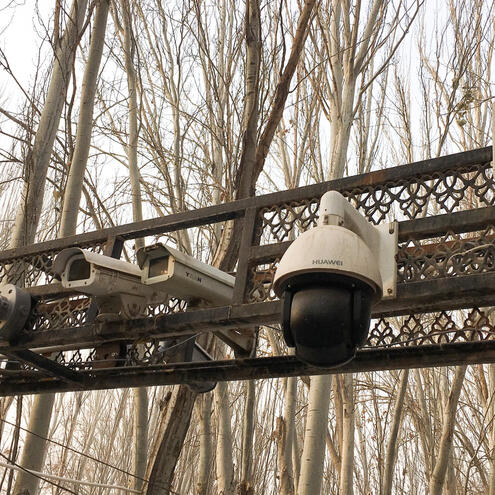
Forced Marriages of Young Uyghur girls to han Chinese men
Uyghur women are forced to marry Chinese Han men against their will despite the fact that the marriage of a Muslim woman to a non-Muslim man is forbidden, let alone, a forced marriage against their will. The goal behind this practice is to erase our identity as forcing Uyghur young women to marry a non-Uyghur, non-muslim man ensures that the children will not be Uyghur nor Muslims.
"This Chinese brother is 45 years old. This girl is only 16 years old." A friend of the "bride" speaks out about how his 16 year old Uyghur friend was threatened to marry a 45 year old Chinese man. When her family refused and were sent to the camps, the man broke into the house, raped her and gave her no choice but to marry him as she was all alone and helpless against the Chinese government.
